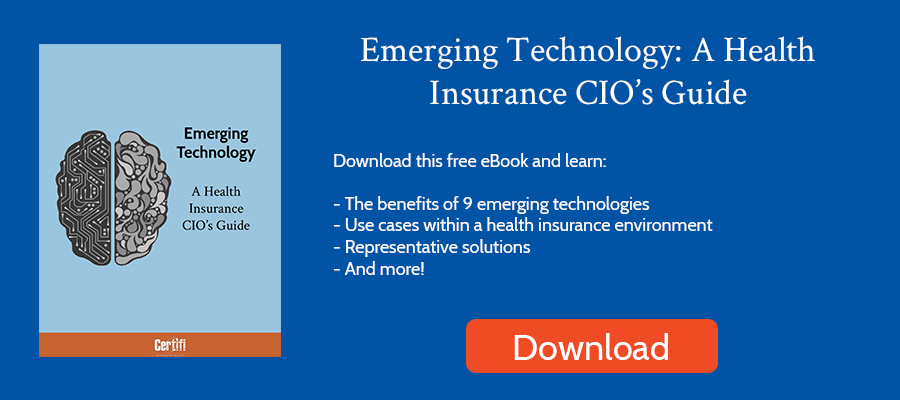In the first week after its release in December 2022, more than a million users signed up for ChatGPT. The new artificial intelligence (AI) tool was a media darling as users showed how it could answer questions quickly on a wide array of topics. Teachers worried that it could write essays for students that would be indistinguishable from a student essay. People used it to write poems and songs about specific topics or specific styles.
It was entertaining but also eye-opening. ChatGPT feels like a giant leap forward for conversational AI, much like Google had been a great leap forward in search.
In addition to the entertainment value, you can also put ChatGPT to work to improve your health insurance processes, from customer service to marketing.
Here’s an overview of how health insurers can use ChatGPT to improve processes.
What is ChatGPT?
The OpenAI project developed ChatGPT. OpenAI is a non-profit initially funded by Elon Musk and Sam Altman created to direct artificial intelligence in ways that benefit humanity. In addition to ChatGPT, OpenAI has released the tools Dall E, which can create images and art from a text description, and Whisper, which can transcribe speech across dozens of languages.
ChatGPT is a large-scale language generation model that uses deep learning techniques to generate text similar to human writing. It can tackle natural language processing tasks like language understanding, language generation, summarization, translation, and more.
OpenAI trained the ChatGPT model on a massive amount of text data to enable it to generate human-like text. Users can access the model through the ChatGPT API, which allows developers to send requests and receive the generated text in response. Developers can integrate the API into various applications and fine-tune the model to specific use cases by providing their data.
Automate Customer Service
Many chatbots exist today. But few of them can converse like ChatGPT. Companies like Meta, Canva, and Shopify have taken notice and use the technology in their customer service chatbots.
ChatGPT excels in delivering unique, creative answers to uncommon questions across many topics. It may not be the best solution for commonly-asked questions with simple answers, but for more complex questions requiring a more conversational approach, it performs admirably.
For health insurers, that means they may augment existing solutions that answer common questions and use ChatGPT on the outliers that require large data sets and more creativity in formulating a response.
Personalize Member Communications
Personalized experiences are the key to improving member engagement and retention, a common goal espoused by most health insurers. Can ChatGPT help them achieve a truly personal member experience?
It might. By feeding the AI model specialized data, insurers may be able to build each customer their own customized AI that remembers all their interactions, using them to predict what they may need. All that while getting to know them personally and conversing with them like a human.
Generate Marketing Ideas
If you can ask ChatGPT to offer advice about removing a peanut butter sandwich from the VCR in the style of the King James Bible, you can probably use it to generate marketing ideas. For health plans, that might include generating messaging ideas for specific target audiences. For example, I asked ChatGPT to detail the benefits of Medicare Advantage for a 68-year-old with diabetes. It delivered five benefits that a marketing team could use as the foundation for a marketing campaign.
You can also leverage ChatGPT to determine what marketing channels may work best. For example, assume you’re trying to market a Medicare Advantage plan to a senior. I asked ChatGPT what channels I should use when marketing to a 67-year-old. It suggested direct mail and television while relegating online to last. ChatGPT also advised me to keep my language clear, avoid jargon, and ensure that the messaging is age-appropriate.
You can also leverage ChatGPT to create better transactional member communications. For example, ask ChatGPT what information to include in a delinquency notification and confirm your notice includes the recommended data.
Identify Fraud
ChatGPT can also help health insurers combat health insurance fraud. Typically insurers use data analytics to identify fraud and send flagged transactions for further investigation.
Insurers can train ChatGPT on large data sets of fraudulent claims. ChatGPT can identify patterns to help insurers detect fraud quickly, proving helpful for insurers with limited automated fraud-fighting capabilities, and have data sets they can use to train the model.
Certifi’s health insurance premium billing and payment solutions help healthcare payers improve member engagement while reducing administrative costs.



